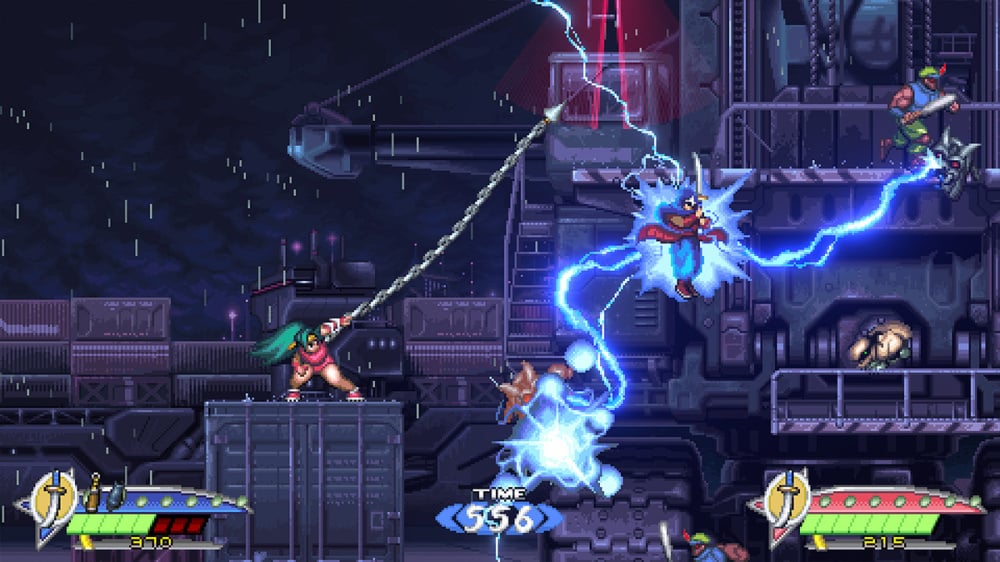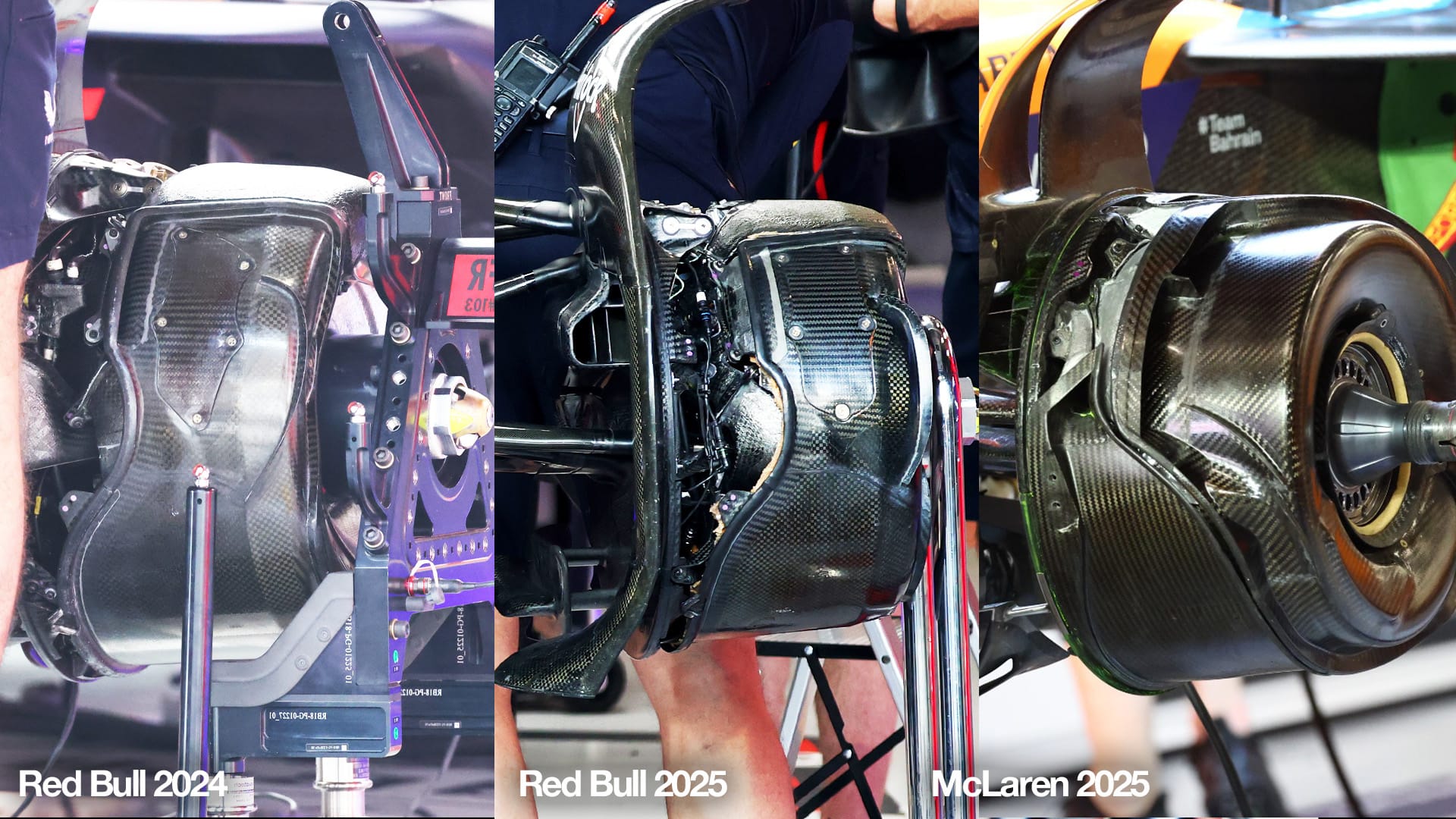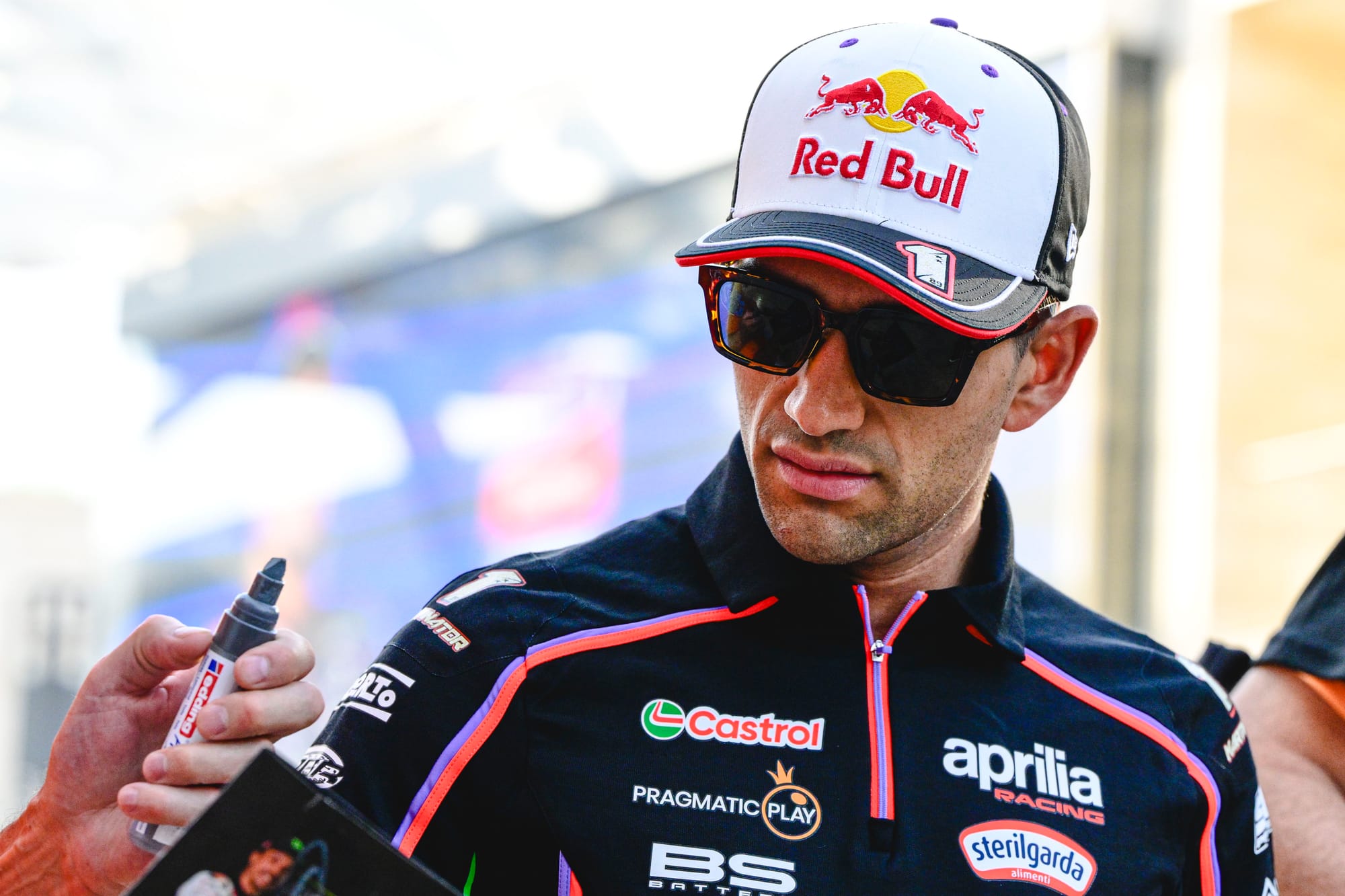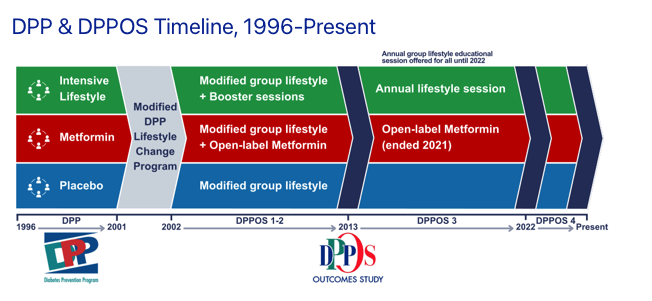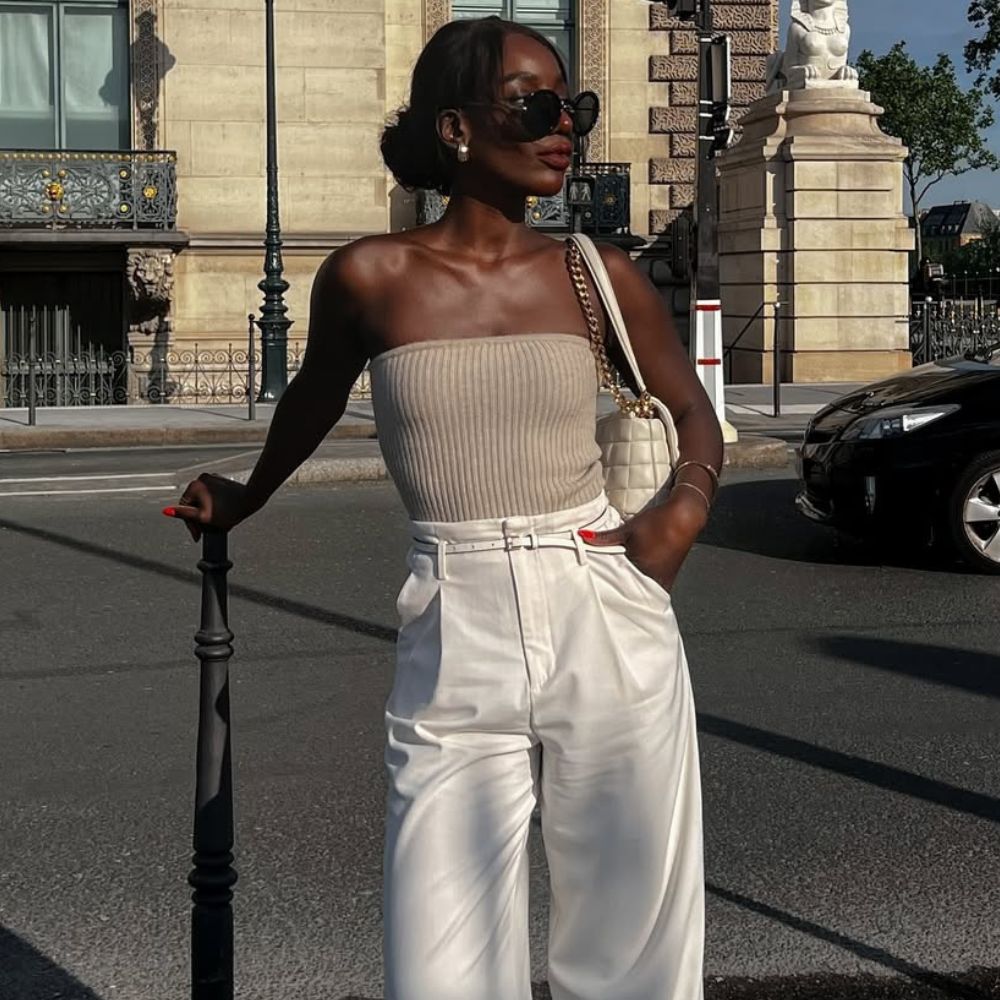NBA mock draft 2025: Instant projection after Mavs win Cooper Flagg sweepstakes
Photo by Grant Halverson/Getty Images The 2025 NBA draft lottery is settled. Here’s our instant mock draft. The 2025 NBA Draft lottery was always going to be one of the most meaningful of the 21st century. Teams at the bottom of the standings wrestled for position all season to increase their odds at landing the No. 1 overall pick and the rights to Duke super freshman Cooper Flagg. We now know where Flagg will begin his NBA career. The Dallas Mavericks are the lucky winners of the NBA Draft lottery, cashing in on a 1.8 percent chance to earn the first pick. The Mavs entered the lottery with the 11th best odds for No. 1 overall, and now have a new franchise star to build around for the foreseeable future. The San Antonio Spurs will pick at No. 2 pick, the Philadelphia 76ers will pick at No. 3, and the Charlotte Hornets came in at No. 4. The biggest loser of the lottery was the Utah Jazz, who entered at No. 1 but fell to No. 5. With the lottery in the books and the draft order finally determined, here’s our instant mock for the 2025 NBA Draft. 1. Dallas Mavericks - Cooper Flagg, F, Duke Flagg was considered a generational prospect coming into Duke after just three years of high school ball, and he lived up to the hype during a freshman season for the ages. Flagg carried Duke to the Final Four and became just the fourth freshman to win the Wooden Award since 1977 recognizing the nation’s most outstanding player. Flagg’s dominant production against older competition despite not turning 18 years old until the end of the Dec. is the best indicator for his future stardom, and he also has so many great tools to work with. Flagg has an elite combination of positional size (6’9 with a 7-foot wingspan), athletic explosiveness, motor, and feel for the game. He’s a true two-way forward who can impact the game without the ball, but he also flashed some incredible upside on the ball as the engine of Duke’s offense. His three-point shot was automatic (44.7 percent) after he turned 18, and his passing reads were damn impressive for a player this big and this young. This is a shocking result after the Mavs traded Luka Doncic midway through this season. Dallas has a new franchise star, and he can take them to same heights Luka reached — maybe even higher. 2. San Antonio Spurs - Dylan Harper, G, Rutgers Harper emerged as the front-runner for the No. 2 overall player in this class early in his freshman season, and maintained that status despite Rutgers finishing under .500 with two projected top-five picks. Harper’s combination of downhill scoring, pull-up shooting potential, and live dribble passing as a sturdy 6’6 guard offers an archetype every NBA team covets. Harper has a special ability to split double-teams and get to the rim as a driver. He converted 70 percent of his rim opportunities even without the nuclear athleticism of guards like John Wall and Russell Westbrook. He scans as more of a scorer than a playmaker at first blush, but he’s still a willing passer who was let down by his teammates on plenty of potential assists. The nice thing about Harper is that he can play either backcourt spot on both ends of the floor, showing an impressive ability to pressure the ball defensively with the size to give smaller guards problems. His shooting will be his swing skill after making only 33.3 percent of his threes and 75 percent of his free throws. If he shoots it well in the league, he’s going to be a highly valuable as a big guard who create for himself and others and play on or off the ball. 3. Philadelphia 76ers - Kon Knueppel, G, Duke Knueppel didn’t seem like an obvious one-and-done at first blush with limited length and explosiveness for an NBA wing, but his toughness, shooting, and secondary creation skills started building his top-10 hype from the moment he entered Duke. Knueppel is the type of perimeter player who fills in all the cracks in a lineup construction. He’s arguably the best shooting bet in this class after canning 40.6 percent of his threes on 207 attempts and 91.4 percent of his free throws. Knueppel can also run pick-and-roll in a pinch, and proved he can throw a killer lob to the roll man during his season with Maluach. If Knueppel actually measures at the 6’7 he was listed at by Duke, his versatile offensive game is appealing enough to make up for his athletic limitations. 4. Charlotte Hornets - VJ Edgecombe, G, Baylor Edgecombe brings a combination of nuclear athleticism, spot-up shooting, and defensive playmaking that makes him a top contender for the first player taken after Flagg and Harper come off the board. The Baylor freshman can turn defense into offense in a hurry after posting a 3.8 percent steal rate and 2.3 percent block rate, and he was effective in transition by ranking in the 69th percentile of points per possession. Edgecombe has a lot of tools to work with, but he remains rough around the edges at this stage. He lacks any sort of off-the-dribble shooting t


The 2025 NBA draft lottery is settled. Here’s our instant mock draft.
The 2025 NBA Draft lottery was always going to be one of the most meaningful of the 21st century. Teams at the bottom of the standings wrestled for position all season to increase their odds at landing the No. 1 overall pick and the rights to Duke super freshman Cooper Flagg. We now know where Flagg will begin his NBA career.
The Dallas Mavericks are the lucky winners of the NBA Draft lottery, cashing in on a 1.8 percent chance to earn the first pick. The Mavs entered the lottery with the 11th best odds for No. 1 overall, and now have a new franchise star to build around for the foreseeable future.
The San Antonio Spurs will pick at No. 2 pick, the Philadelphia 76ers will pick at No. 3, and the Charlotte Hornets came in at No. 4. The biggest loser of the lottery was the Utah Jazz, who entered at No. 1 but fell to No. 5.
With the lottery in the books and the draft order finally determined, here’s our instant mock for the 2025 NBA Draft.
1. Dallas Mavericks - Cooper Flagg, F, Duke
Flagg was considered a generational prospect coming into Duke after just three years of high school ball, and he lived up to the hype during a freshman season for the ages. Flagg carried Duke to the Final Four and became just the fourth freshman to win the Wooden Award since 1977 recognizing the nation’s most outstanding player. Flagg’s dominant production against older competition despite not turning 18 years old until the end of the Dec. is the best indicator for his future stardom, and he also has so many great tools to work with. Flagg has an elite combination of positional size (6’9 with a 7-foot wingspan), athletic explosiveness, motor, and feel for the game. He’s a true two-way forward who can impact the game without the ball, but he also flashed some incredible upside on the ball as the engine of Duke’s offense. His three-point shot was automatic (44.7 percent) after he turned 18, and his passing reads were damn impressive for a player this big and this young. This is a shocking result after the Mavs traded Luka Doncic midway through this season. Dallas has a new franchise star, and he can take them to same heights Luka reached — maybe even higher.
2. San Antonio Spurs - Dylan Harper, G, Rutgers
Harper emerged as the front-runner for the No. 2 overall player in this class early in his freshman season, and maintained that status despite Rutgers finishing under .500 with two projected top-five picks. Harper’s combination of downhill scoring, pull-up shooting potential, and live dribble passing as a sturdy 6’6 guard offers an archetype every NBA team covets. Harper has a special ability to split double-teams and get to the rim as a driver. He converted 70 percent of his rim opportunities even without the nuclear athleticism of guards like John Wall and Russell Westbrook. He scans as more of a scorer than a playmaker at first blush, but he’s still a willing passer who was let down by his teammates on plenty of potential assists. The nice thing about Harper is that he can play either backcourt spot on both ends of the floor, showing an impressive ability to pressure the ball defensively with the size to give smaller guards problems. His shooting will be his swing skill after making only 33.3 percent of his threes and 75 percent of his free throws. If he shoots it well in the league, he’s going to be a highly valuable as a big guard who create for himself and others and play on or off the ball.
3. Philadelphia 76ers - Kon Knueppel, G, Duke
Knueppel didn’t seem like an obvious one-and-done at first blush with limited length and explosiveness for an NBA wing, but his toughness, shooting, and secondary creation skills started building his top-10 hype from the moment he entered Duke. Knueppel is the type of perimeter player who fills in all the cracks in a lineup construction. He’s arguably the best shooting bet in this class after canning 40.6 percent of his threes on 207 attempts and 91.4 percent of his free throws. Knueppel can also run pick-and-roll in a pinch, and proved he can throw a killer lob to the roll man during his season with Maluach. If Knueppel actually measures at the 6’7 he was listed at by Duke, his versatile offensive game is appealing enough to make up for his athletic limitations.
4. Charlotte Hornets - VJ Edgecombe, G, Baylor
Edgecombe brings a combination of nuclear athleticism, spot-up shooting, and defensive playmaking that makes him a top contender for the first player taken after Flagg and Harper come off the board. The Baylor freshman can turn defense into offense in a hurry after posting a 3.8 percent steal rate and 2.3 percent block rate, and he was effective in transition by ranking in the 69th percentile of points per possession. Edgecombe has a lot of tools to work with, but he remains rough around the edges at this stage. He lacks any sort of off-the-dribble shooting threat, ranking in the 10th percentile on pull-ups. He was a surprisingly poor finisher at the rim (60.3 percent) given his bounce. Edgecombe just also isn’t very big even after encouraging measurements (6’4 barefoot with a 6’7.5 wingspan) at the combine. If he can refine his offensive approach and figure out his shooting touch when attacking off the dribble, he has a high-floor for two-way upside and a high ceiling thanks to his burst and hang-time offensively.
5. Utah Jazz - Khaman Maluach, C, Duke
Maluach didn’t start playing basketball until 2019, and he’s already competed in the Paris Olympics and helped power a Final Four run during his short time in the sport. The South Sudanese center has elite physical measurements for an NBA big man at 7’2, 250 pounds, with a 9’6 standing reach. Duke had Maluach play a narrow role as a freshman, but it’s easy to see his long-term upside if everything comes together. He showcased soft touch around the basket with 73.6 percent true shooting, mostly on rolls to the rim and putbacks. Maluach only made four three-pointers this season, but he was more willing to shoot them when he was playing back in Africa, and it should be part of his game long-term. He’s already a solid free throw shooter with a 76.6 percent mark from the line. Maluach should be impactful defensively based on size alone, and he’s also pretty quick laterally on the perimeter. His positioning remains a work in progress on the defensive end, and at times he can be a bit slow off the ground as a leaper. The biggest red flag might be his complete lack of playmaking after finishing with only 20 assists in 39 games. If you think Maluach will shoot from deep eventually, he still has a clear path to returning top-10 value when matched with his ridiculous length and interior finishing.
6. Washington Wizards - Derik Queen, C/F, Maryland
Queen is a fascinating upside bet as a beefy big man with significant face-up scoring polish and developing playmaking chops. Queen is a load to deal with when he gets the ball on a spaced floor, attacking defenses with a combination of physicality and touch that’s tough to contain. He’s already very good at drawing fouls inside, and has shown he can finish through contact. He can create his own offense off the bounce without an assist, and he’s good enough as a passer to kick out the ball when the double team comes. The issues with Queen’s NBA projection comes when he doesn’t have the ball in his hands. He struggles defensively whether he’s playing the four or the five with limited length and explosiveness. He doesn’t always play with a high motor defensively, which can be frustrating to watch. Queen also isn’t a reliable floor spacer yet for his teammates in the halfcourt, making only four three-pointers all year. If Queen is allowed to play with the ball in his hands early in his career, there’s a pathway to big offensive impact, but the fact that his role player skills are so limited is a concern.
7. New Orleans Pelicans - Ace Bailey, F, Rutgers
It’s easy to believe Bailey is chock full of long-term upside as an athletic 6’9 forward (okay, he measured 6’7.5 barefoot) with a 7-foot wingspan who flashed some wild shot-making ability throughout his freshman year at Rutgers. When Bailey is hot, he can takeover a game as a scorer with a pure jumper very few players can effectively contest. He’s also a skilled mid-range scorer who made 46 percent of his non-rim two-pointers with 73 percent of those looks being self-created. He has the athletic tools to recover defensively, showing solid supplemental rim protection skills and defensive rebounding potential. Bailey is so talented that he can usually get a decent look at the rim, but that doesn’t mean he should always take it. He was an inefficient scorer at Rutgers with 53 percent true shooting. His handle is so shaky that he can’t always leverage his physical tools near the basket, and to this point he struggles badly with his passing vision. It’s hard to envision Bailey as a star when his handle and playmaking remain this much of a work in progress, but he should still have a high floor with his size, explosiveness, and shooting if he learns to slow down and consistently make smarter reads.
8. Brooklyn Nets - Jeremiah Fears, G, Oklahoma
Fears is one of the youngest players in this draft class after spending only three years in high school (he won’t be 19 until Oct.), but Oklahoma trusted him enough to consistently put the ball in his hands in the toughest conference in the country. Fears delivered in a high usage role, getting the Sooners to the NCAA tournament and putting on a show in a close first-round loss to UConn. The 6’3 guard has the best combination of speed and ball handling in this class, generating paint touches at will. What happens once he beats his initial defender is often a bit of an adventure: Fears only shot 53 percent at the rim, and had a bad habit of throwing the ball all over the place with a 20 percent turnover rate. Fears should get better as a finisher as he adds strength and craft to his game, and it’s promising that he’s already a monster at getting to the foul line. His three-point stroke is another big question mark after hitting only 28 percent of his triples, but his willingness to shoot and touch from the foul line (85 percent) indicates that he’s a decent bet to shoot it long-term. If everything comes together Fears could become a gifted advantage creator off the bounce in the NBA, but it’s going to take him some time to get there.
9. Toronto Raptors - Tre Johnson, G, Texas
Tre Johnson is built for buckets. Texas’ freshman shooting guard led the SEC in scoring by putting up about 20 points per game on an impressive array of dagger jumpers. He has an elite shooting profile as a high volume (224 attempts) and highly accurate (39.7 percent) three-point shooter who also has fantastic touch (87 percent) from the free throw line. Johnson is weapon off set plays with an ability to sprint around screens and knock down shots. He plays with a fiery demeanor and a competitive edge that should be appealing to teams, but he’s still learning how to make the right reads on the floor. Johnson isn’t a mega athlete attacking the basket, and his passing vision is pretty basic to this point. He can be engaged at the point of attack defensively, but he’s not a major defensive playmaker off the ball. Johnson will go as far as his jump shot takes him, and with one of the prettiest shooting strokes in this class, that’s an enticing enough bet for a top-10 selection.
10. Houston Rockets - Kasparas Jakucionis, G, Illinois
Jakucionis was trending as a top-5 pick earlier in the season before struggling a bit against better competition that exposed some holes in his game. The Lithuanian point guard arrived in Champaign and immediately showed off his fantastic passing creativity, pull-up shooting, and ability to get to the free throw line. That’s an enticing blend of skills for a 6’5 point guard, but only if he can cut down his turnovers and show more fight defensively. Big Ten defenses started blitzing Jakucionis midway through the year and found that he’d routinely throw the ball to the other team. Part of the problem is that Jakucionis is just a limited run-and-jump athlete who finished his freshman year with only one dunk. Still, Jakucionis’s ability to self-create three-point looks and find unique passing angles remains worthy of lottery consideration. Getting his three-point shot more consistent will be crucial step to carving out an NBA career.
11. Portland Trail Blazers - Collin Murray-Boyles, F/C, South Carolina
Try to find a better defensive prospect in this class than Collin Murray-Boyles, and you’ll be looking a long time. The South Carolina sophomore was a wrecking ball for opposing offenses despite being undersized as a 6’7 power forward or center. Murray-Boyles has phenomenal defensive instincts off the ball, zooming around the court to provide timely help and seal any potential openings for the offense. His long arms (7’2 wingspan) and strong base help him play bigger than his size, and his razor sharp hands helped him force takeaways all year. Murray-Boyles’ projection is a bit murkier offensively because he’s not currently a plus shooter at 23 percent from three on 34 attempts, and 69.5 percent from the foul line for his career. Instead, CMB is at his best executing dribble-handoffs, making plays as a short roll passer, and attacking off the bounce with power and touch. There will be some understandable skepticism about the NBA translation of an undersized big man who can’t shoot yet, but Murray-Boyles’ all-around production and defensive genius is hard to discount.
12. Chicago Bulls - Noa Essengue, F, Ulm
Essengue is a huge forward who has already proven he can produce in a pro league despite being the second youngest player in this draft class. The French forward doesn’t turn 19 until Dec., but he’s enjoyed a good season in the top German league while showing off impressive defensive switch-ability and interior scoring touch. At 6’9 with a 9’3 standing reach, Essengue is a fluid athlete who can cover ground on the perimeter and wall up at the rim with his length. He runs the floor like a gazelle in transition, and can even shake some defenders with his handle as long as he’s not facing ball pressure. His scoring efficiency (61.2 true shooting percentage) was phenomenal for someone so young in a pro league, which lends optimism to his offensive projection even if his shooting numbers from deep are a bit rough. Essengue is a bet on youthful production, physical tools, and motor. If a team can iron out his jump shot, they should have a lot to work with.
13. Atlanta Hawks - Asa Newell, F, Georgia
Newell is an athletic play finisher who dunks with power at every opportunity, bullies smaller forwards on the offensive glass, and provides some secondary rim protection. He isn’t a good outside shooter yet after hitting 29 percent of his threes, but his stroke looks projectable enough that it should keep improving. He feels a bit caught between positions at 6’9 with a 7-foot wingspan, not big enough to anchor a defense at center or skilled enough to fully play on the perimeter as a big wing. Still, Newell’s ability to play with force around the basket is appealing, and if he lands with a gifted facilitator, he could walk into easy buckets just by playing with energy.
14. San Antonio Spurs - Carter Bryant, F, Arizona
There’s a lot to like about Bryant: he has ideal size for an NBA wing (6’8, 7-foot wingspan), he’s an explosive athlete, he forced a ton of turnovers on the defensive end, and he proved he can hit a spot-up three. The Arizona freshman is pretty limited with the ball in his hands to this point both in terms of creating his own shot off the dribble or finding teammates as a passer. He has to continue to be a catch-and-shoot threat to impact the game offensively. While his 37.1 percent mark from three is impressive, it came on under three attempts per game, which leads to legitimate questions about how much utility his shot will have against bigger and faster pro defenses. Bryant’s own defense should get him on the floor early in his NBA career, and if he can knock down shots, he should have a role as a combo forward for a long time.
15. Oklahoma City Thunder - Jase Richardson, G, Michigan State
Richardson finished second in freshman BPM behind Flagg despite not earning a starting role at Michigan State until Feb. The guard left a massive imprint on winning with his knockdown shooting anchoring his efficient halfcourt scoring. Only Knueppel finished with a better true shooting percentage than Richardson’s 62.4 percent mark among perimeter players in this draft class. NBA evaluators will be concerned about his size (he’s listed at 6’3 and that seems generous) and his lack of a heavy on-ball reps after a below-average 19.4 percentage usage rate. Still, Richardson is talented finisher despite his stature and just knows how to find soft spots in the opposing defense to get off his jumper. Small guards always have a tough road ahead in this era of this league, but Richardson is good enough to make it work.
16. Orlando Magic - Walter Clayton Jr., G, Florida
Clayton deserves to go down as a March Madness forever hero after powering Florida to the national championship. The NCAA tournament was his playground, with huge scoring performances and clutch daggers piquing the NBA’s interest along the way. There will be some skepticism about Clayton’s translation if only because he enters the draft as a senior without plus positional size and with defensive question marks. There’s no doubting his shooting ability, though. Clayton ripped 38 percent of his threes and 87 percent of his free throws for his college career, showing excellent touch on self-created, off-balanced shots. He made strides as a distributor this year, and finished well at the rim (65 percent) without great size. The Magic need shooting any way they can get it. Clayton’s closing kick was impressive enough to make the middle part of the first round a possibility.
17. Minnesota Timberwolves - Labaron Philon, G, Alabama
Philon started for an elite team all year as a true freshman and made big contributions despite not having a reliable outside jumper yet. The 6’4 guard has one of the better handles in the class, and he does a tremendous job manipulating pace to punch holes in the opposing defense. He’s a solid live-dribble passer who can kick out to teammates for threes, and he has a developing mid-range/floater game to score even when he doesn’t make it all the way to the rim. Philon’s defense is also intriguing with quick hands that generated the most steals on the Crimson Tide by a big margin. The catch with Philon is he isn’t a great outside shooter yet (31.5 percent from deep) and he has trouble finishing over length. If the shot comes around, his game feels built for the playoffs.
18. Washington Wizards - Thomas Sorber, C/F, Georgetown
Sorber is a physical big man who sets screens, crashes the glass, protects the paint, and offers some playmaking from the five. He outperformed his RSCI ranking during his freshman year at Georgetown by having more substance than style in his skill set. He’s a tad short for an NBA center at 6’10 but makes up for it with strength, length, and a bruising style of play. He’s not the most explosive leaper, and he’s not yet a threat to shoot from three, but Sorber’s old school game feels built to last in the league.
19. Brooklyn Nets - Noah Penda, F, Le Mans
Penda is a big wing who emerged this year as a potential first-round pick for his playmaking ability on both ends of the floor. He has fantastic defensive instincts and sharp hands (2.6 percent steal rate, 3.5 percent block rate) with an ideal frame for a pro wing at 6’8, 225 pounds, with a 7-foot wingspan. He’s a good passer and smart cutter who knows how to find his way into opportunistic scoring chances. Penda isn’t a burner with his foot speed and his three-point shot (34.7 percent on three attempts per game) is inconsistent but improving. He’ll turn 21 years old as an NBA rookie, but his production in the top French pro league is encouraging. Teams looking for a connective wing (who isn’t?) won’t find many bets more appealing that Penda.
20. Miami Heat - Will Riley, G, Illinois
Riley fits the mold of a microwave scorer, only he’s a lot bigger than most players in that archetype at 6’8. He didn’t shoot the ball particularly well from deep (32.6 percent) and struggled to score efficiently (53.3 percent true shooting) as a freshman at Illinois, but his talent is easy to see. Riley still needs to add a lot of strength to his frame, which will help him get all the way to basket instead of setting from mid-range. Getting stronger will help his defense, too, which is currently a major question mark. The Heat feel like an ideal landing spot to help him develop physically and let his natural ability flourish.
21. Jazz - Egor Demin, G/F, BYU
Demin is one of the more polarizing players in this draft as a brilliant passer at 6’9 who struggles against physicality. The Russian guard was drawing top-five hype early in the season against lower level competition, but Big 12 play exposed some pressing questions about his game. Demin can see over the top of almost any defender and find angles other playmakers would miss. The problem is he can’t always access his passing because he’s physically weak, limited athletically, and doesn’t have a reliable handle yet. Demin often settled for threes because he couldn’t beat his man off the dribble, but he’s not a good shooter yet (27.3 percent from three). Getting stronger and improving his jumper could change a lot for Demin, but it’s hard to think he’s worth a lottery pick given his flaws.
22. Hawks - Nique Clifford, F, Colorado State
Clifford was a five-year college player outside of the power conferences who morphed into one of the best players in the sport this season. Originally a defensive specialist, Clifford got better and better offensively every year, culminating in a star turn in a heavier on-ball role this season. A strong 6’6 wing, Clifford is an active defender and excellent rebounder who plays with physicality and has quick hands. The Rams needed him to create with the ball in his hands this year, and he showed improved passing chops and a developing mid-range game. Clifford isn’t a high volume three-point shooter and probably won’t get many on-ball reps in the league, but he should be a multi-positional defender who brings toughness at both ends.
23. Pacers - Adou Thiero, F, Arkansas
Thiero is a physical and athletic combo forward who attacks the basket with aggression, brings defensive versatility, and excels in transition. Thiero has a fantastic combination of length and explosiveness with a 7-foot wingspan and some of the best leaping ability in the class. He plays like he was shot out of a cannon on both ends of the floor. He’s mostly a straight-line driver and cutter offensively who can finish above the rim when he gets a chance. Defensively, he can switch a bit and offers some supplemental rim protection. Thiero’s three-point shooting is both low volume and inaccurate (28.4 percent on his career), and he struggled to stay healthy this season. Still, he has a natural role as an energy forward that flies around to make plays on both ends.
24. Thunder - Liam McNeeley, F, UConn
McNeeley was identified as a potential lottery pick during his high school career at Montverde where he played alongside fellow first-round picks Flagg, Queen, and Newell (as well as BYU point guard Robert Wright II). He was supposed to be one of the best shooters and smartest offensive processors in this class, but that didn’t really come to fruition during his freshman season at UConn. McNeeley only hit 31.7 percent of his threes, and generally struggled with physicality at both ends of the floor. An ankle injury slowed him down a bit and took away his chance to build momentum this season. The movement shooting and close-out attacking that looked so promising on his high school tape should still be in there, but his limited athleticism will be tough to overcome.
25. Orlando Magic - Tahaad Pettiford, G, Auburn
Pettiford is one of the the biggest names to watch during the combine from a college basketball perspective. He might be the best guard in the country next season if he returns to Auburn for his sophomore year, but his electric scoring ability just might be enough to get a team to take him at the end of the first round. Pettiford is incredibly shifty with the ball in his hands, and is a threat to pull-up with his jump shot any time he approaches the three-point line. He shot 36.6 percent on 191 attempts from deep this year, with nearly 45 percent of those attempts being self-created. Pettiford just effortlessly creates space with the ball in his hands, and that’s alway going to be a valuable skill even if he’s undersized for an NBA guard (listed at 6’1) with limitations as a defender and rim finisher.
26. Brooklyn Nets - Danny Wolf, F, Michigan
Wolf is a fascinating player as a 7-foot, 250-pound big man who mostly operated as a guard after transferring from Yale to Michigan. Wolf ran a steady diet of pick-and-rolls for the Wolverines, combining rare ball handling ability for a big man with solid passing vision and some downhill scoring skill. Wolf was also the biggest culprit of Michigan’s turnover problems, finishing with nearly as many TOs (120) as he did assists (132). I’m skeptical an NBA team is going to give Wolf so many on-ball reps, and his jump shot is still shaky for a floor spacer. He hit 33.6 percent of his threes this year, but only 59.4 percent of his free throws. Wolf could be an interesting connector if his shot comes around, but his role, decision-making, and shooting are still big questions despite some lottery hype.
27. Brooklyn Nets - Ben Saraf, G, Ulm
Saraf is a 6’5 point guard who has had a productive season as an 18-year-old in the German league playing for Ulm alongside Noa Essengue. The Israeli floor general is skilled in the pick-and-roll. He’s more of a passer than a scorer, bur he does have a nice mid-range pull-up game. Saraf is a shaky jump shooter from deep (29.4 percent from three) who will need to develop more range on his jumper to keep defenses honest from going under screens and sagging off him. Still, his 32.4 percent assist rate, 2.6 percent steal rate, and 27.6 percent usage gives him a chance if he can improve on his struggles to score efficiently in the halfcourt.
28. Boston Celtics - Nolan Traore, G, Saint-Quentin
Traoe was thrust into a huge role as an 18-year-old playing in the top French league, and he turned in a productive but inefficient season that cooled his top-five preseason hype. The 6’5 lead guard might be the fastest player in this class with the ball in his hands, showing outstanding burst attacking the basket with excellent passing vision. He operated at a sky-high 30.1 percent usage rate this year, and he turned in a highly impressive 43.4 assist rate. Traoe just isn’t a good outside shooter or finisher right now, and it killed his own scoring efficiency. He finished with 51.6 percent true shooting and only made 31.7 percent of his threes on just under four attempts per game. His speed, passing, and positional size gives him a nice foundation to develop if he starts improving his scoring touch.
29. Phoenix Suns - Rasheer Fleming, F, St. Joseph’s
Fleming is a massive forward who caught the NBA’s eye during his junior season thanks to his leap in perimeter skill. At 6’9+, 233 pounds with a 7’5 wingspan, Fleming has the long-and-strong frame evaluators dream about for a forward. He knocked down 39 percent of his threes on 159 attempts this season, and also finished 70 percent of his shots at the rim. Fleming just can’t do much with the ball in his hands offensively other than catch-and-shoot, and he finished the season with more 10 more turnovers than assists. His defensive playmaking markers are solid, but going from an older player in the A-10 to an NBA rookie is a big jump. If he can keep knocking down spot-ups and his defense holds up, he could have a long pro career.
30. Los Angeles Clippers - Kam Jones, G, Marquette
Jones stepped out from the shadows of Tyler Kolek and Oso Ighodaro as his former Marquette teammates went off to the NBA, and proved he could be more than just a microwave scorer. Jones took over as the Golden Eagles’ engine, and made a massive leap as a facilitator, going from a 16 percent assist rate in 2024 to a 38.2 percent assist rate (that ranked No. 12 nationally) in 2025. Despite so many more touches, Jones’ turnover rate barely went up, showing that he knows how to make good decisions with the ball. His three-point accuracy dropped off with the bigger workload (from 40.6 percent to 31.1 percent), but scouts will hope his sample from previous seasons is a better indication of what he can do in a role similar to the one he’ll have in the NBA.































